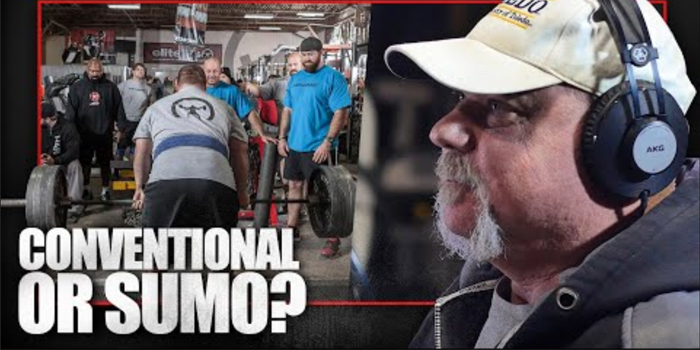
Have you felt your leverages change as you gain or lose weight? Are you just a big guy overall who is thinking of switching between deadlift stances? What’s the sweet spot between an extra drive out of the bottom and the inability to reach a bar on the floor?
Dave Tate shares that the sweet spot to switch from a sumo stance deadlift to a conventional stance was when his torso was thick enough that he could drive his stomach into his thighs off the floor, almost like the bottom of a squat. This usually occurred around the 280-pound mark for him. However, that is only what fit Dave’s body best.
To determine your best stance at any given size, test it. No, you can’t just walk into the gym, max both, and pick whichever one is stronger to use in your next meet (or the rest of your competitive career). You have to give them both a significant amount of practice to really be sure if one is better than the other. For most people that means they have to put six months to a year of sumo deadlifting if they’ve never done it before. Dave always pulled in both stances from the beginning of his career so he was able to keep better tabs on how his size changes affected his deadlift. He recommends that everybody keeps both of them in your exercise rotation so that you don’t lose technique.
Beyond determining which stance is a theoretical best, the ability to switch between stances easily makes you more adaptable during meet time. If you really torched your hips on your squats, it was valuable to be able to switch from a sumo stance to a conventional stance. Even if your sumo deadlift was normally 50 pounds higher than your conventional, you could be facing a scenario where you’re only prepared to hit your sumo deadlift as an opener. Meanwhile, if you tweak your lower back during bench press, you might not be prepared to hit a heavy conventional deadlift. An all-time deadlift PR might not be in the cards that day, but this strategy can lead to an all-time total PR.
Text By Mason Nowak













